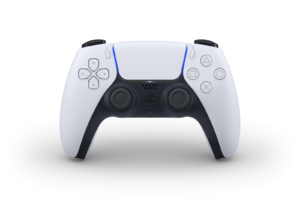You may be DualShocked by these PlayStation 5 controller changes.
Sony’s stellar DualSense PS5 controller explained
DualSense distilled
This may look like a tweaked DualShock , but Sony calls its PS5 (PlayStation 5) controller DualSense with good reason. The PS5 controller is aptly named because of the focus on feel and feedback. In terms of touch, there are also tweaks to grips and triggers. As for feedback, haptic feedback and adaptive triggers provide next-gen rumbles designed for immersion.
How much does the PS5 controller cost in Australia?
As revolutionary as the DualSense is, it doesn't come cheap. Here in Australia, the new PS5 controller will cost $109.95 at the recommended retail price, but now that it has been out for a few months, there are some decent deals running through retailers like Amazon and Harvey Norman. Here's an updated list of PS5 controller deals as of 2021.
Pricing is only accurate of last update (26/02/2021).
DualSense PS5 controller price and deals
DualShock is dead. Long live DualSense. For as long as there’s been PlayStation, there’s been DualShock, with a familiar iterative naming scheme. The PlayStation 2, PlayStation 3, and PlayStation 4 were all matched with a DualShock 2, DualShock 3, and DualShock 4 controllers.
But Sony has gone in a new direction with the PlayStation 5 by introducing the DualSense instead of the expected DualShock 5. New name. No numbers. It's a way for Sony to help set itself apart in comparison to the Xbox Series X controller and a new way for you to feel what you play in the most anticipated PlayStation 5 games.
In the PlayStation 5 vs Xbox Series X next-gen showdown, the DualSense PS5 controller is one of Sony's biggest drawcards.
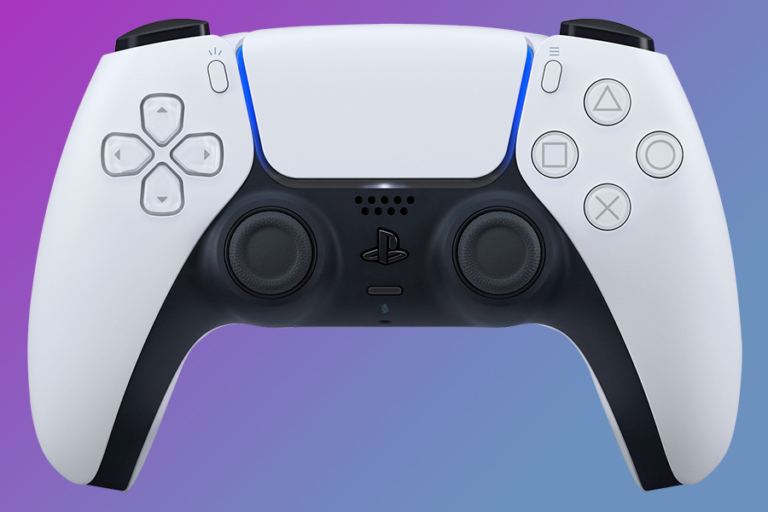
The DualSense PS5 controller features haptic feedback, adaptive triggers and more.
DualSense Design
At launch, the DualSense PS5 controller is only available in White.
It wasn’t until the DualShock 4 that Sony really mixed things up with the controller design. This time around, the PlayStation 5’s DualSense controller looks like a cross between the DualShock 4 and an Xbox One controller. At launch, the PlayStation 5’s DualSense controller is only available in a two-tone black-and-white finish. The light bar now is now positioned in a circuit that runs between the left and right triggers/bumpers and around the returning centre touchpad.
An all-black DualSense controller has already leaked, but the word is it won't be available for a while, so you’ll have to wait for it if, like Batman, your colour-palette tastes lean exclusively towards black.
Outside of the two-tone colour, you’ll find the D-pad, face buttons, analog sticks, the PlayStation button, as well as the triggers and bumpers in much the same spots as before. There’s now a dedicated mute button below the PlayStation logo – which looks more like a logo and less like a button – and the ‘Share’ button is now the ‘Create’ button.
Create vs Share button
The Create button on the DualSense essentially performs all the same functions as the Share button on PS4, with a few extra bells and whistles. You can still take screenshots and capture gameplay footage, but it also allows you to make some quick video edits or start broadcasting your gameplay.
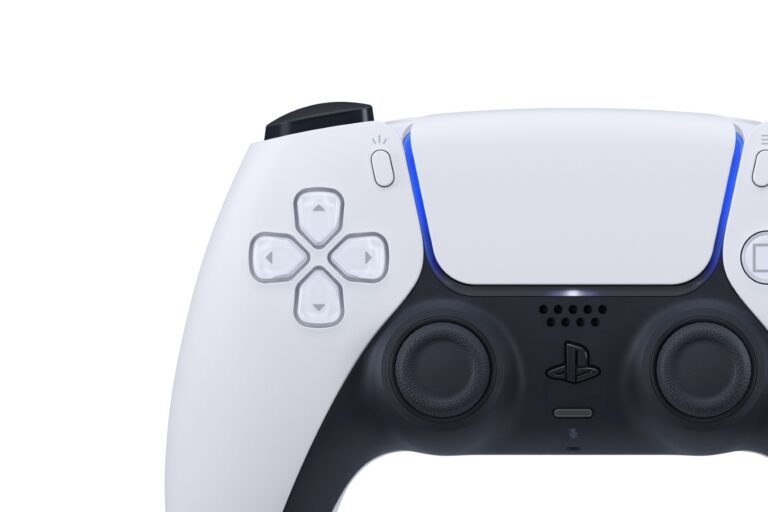
Sony has replaced the Share button with a Create button with DualSense 5
DualSense touchpad
Alongside Sony’s audio push via its Tempest technology (more about that here), the DualSense is designed to enhance immersion through a greater sense of touch. An evolved version of haptic feedback is a core focus of DualSense. The next-gen controller offers physical feedback is select games that mimics environmental sensations, such as skating on ice in Astro's PlayRoom.
This is be complemented with adaptive triggers (L2 and R2) that are designed to let you “feel the tension of your actions”. Some examples include the tension of pulling a trigger, or the pull of Spidey's web when swinging around Manhattan in Spider-Man.
On top of this, there are subtle changes to the grip as well as a changed angle for the hand triggers. DualSense is designed with hands of all sizes in mind and, even though it’s packing new features, it's not overly weighty.
Headset optional
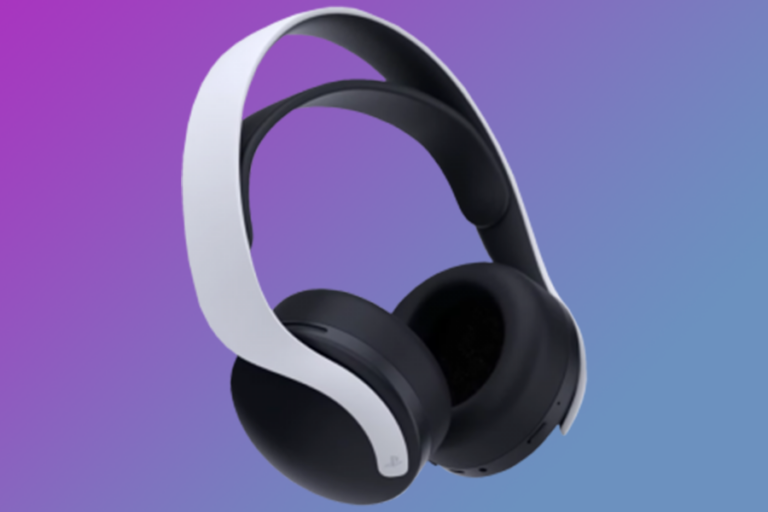
To get the most out of the PlayStation 5’s Tempest 3D AudioTech, you’ll want to use a headset for full appreciation. But if you find yourself without a controller and a friend wants to chat, the DualSense has an inbuilt microphone array for headset-free voice chats. That said, the DualSense microphone is intended for quick chats only and doesn't provide the best audio in game chat.
DualSense PS5 controller battery life
In our tests, the DualSense PS5 controller typically gets around 10 - 12 hours of active play time. It's a marked improvement on the DualShock 4, which sometimes struggled to last 8 hours. Better yet, the DualSense charges faster thanks to the USB-C connection. Fancy feedback features aside, USB-C is genuinely one of the biggest upgrades in the PS5 controller. Finally, we can start packing away our otherwise useless Micro-USB cables.
DualSense VR controller
While details are scarce at the moment, Sony has confirmed that it is developing a new PSVR (PlayStation VR) headset for PS5. Why that's relevant to the DualSense controller is that amongst the few details that were revealed, Sony announced that the brand-new PSVR controller would share a lot of the same DNA as DualSense.
Sony says the next-gen VR controller will “incorporate some of the key features found in the DualSense wireless controller, along with a focus on great ergonomics.” Considering the success of DualSense, it makes a lot of sense. Imagine what an immersive combination DualSense, 3D audio, and virtual reality could make for.
A very DualShock history
The iconic design of the original DualShock controller remained almost entirely unchanged for three generations. Originally, the first DualShock was an updated version of the Dual Analog Controller that launched with the PlayStation console. DualShock started the DualShock trend of side-by-side analog sticks covered in textured rubber; a left-side D-pad; Select, Start, and Analog buttons in the centre; the iconic Triangle, Circle, X, and Square face buttons on the right; as well as two shoulder bumpers (L1 and R1) plus two triggers (L2 and R2).
Inside were two vibrating motors – an early form of haptic feedback – including a larger one in the left grip to allow for different levels of vibration while playing. The PlayStation 2’s DualShock 2 was identical in its presentation, except it was black instead of grey by default. PlayStation 3 may have launched with a Sixaxis controller, but the DualShock 3 soon followed. Apart from wireless Bluetooth connectivity and a pressable PlayStation-logo button that replaced the Analog button, the familiar look persisted.
The DualShock 4 provided a great new look as well as practical inclusions for PlayStation 4 players. Select was gone and replaced with a Share button for capturing screenshots, gameplay clips and, as the name implies, sharing them. There was also a large two-point capacitive touchpad at the top of the controller, with a small mono speaker just below it. Near the charging port of a DualShock 4 is also a three-LED light bar used to correspond with same-console player colours or add developer-controlled light feedback in supported games.
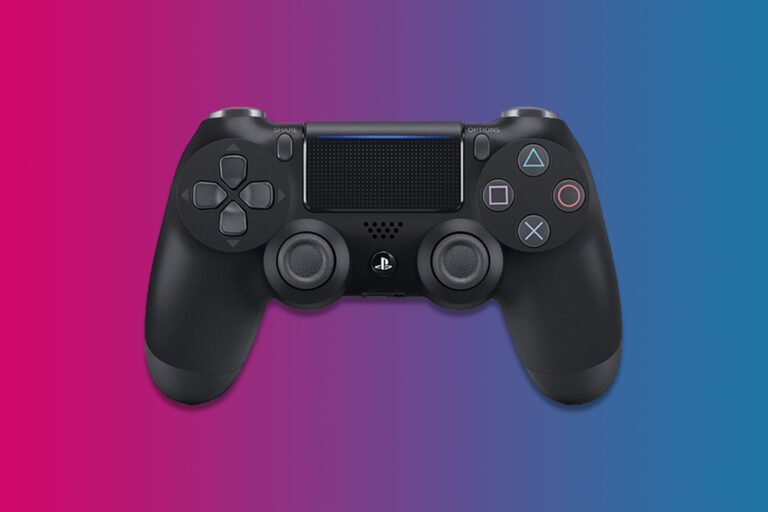
The DualShock 4 introduced a touchpad, better ergonomics and an LED bar that offered feedback in supported games.
Related Articles



